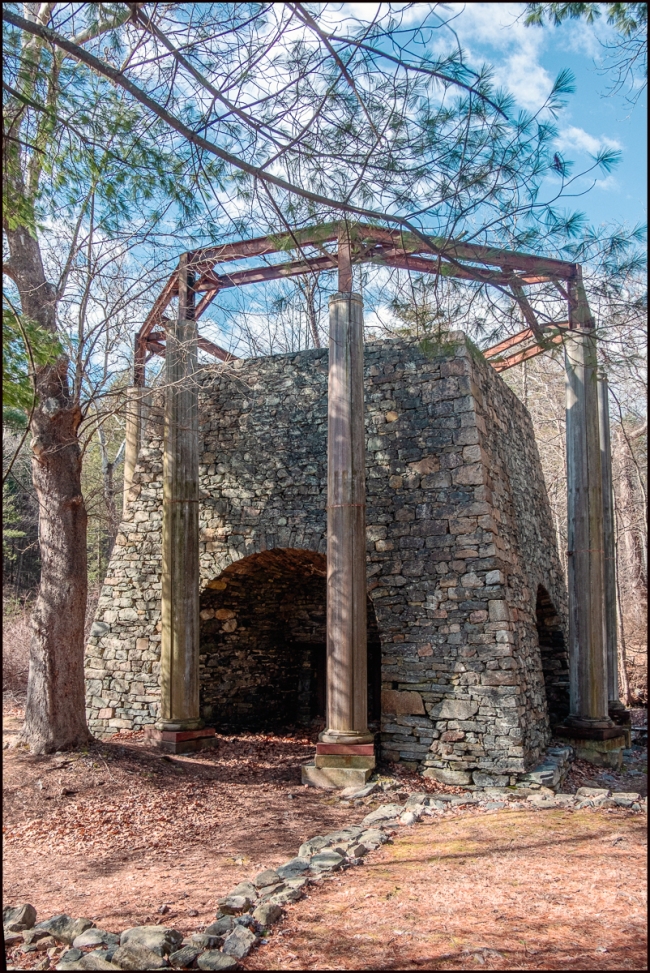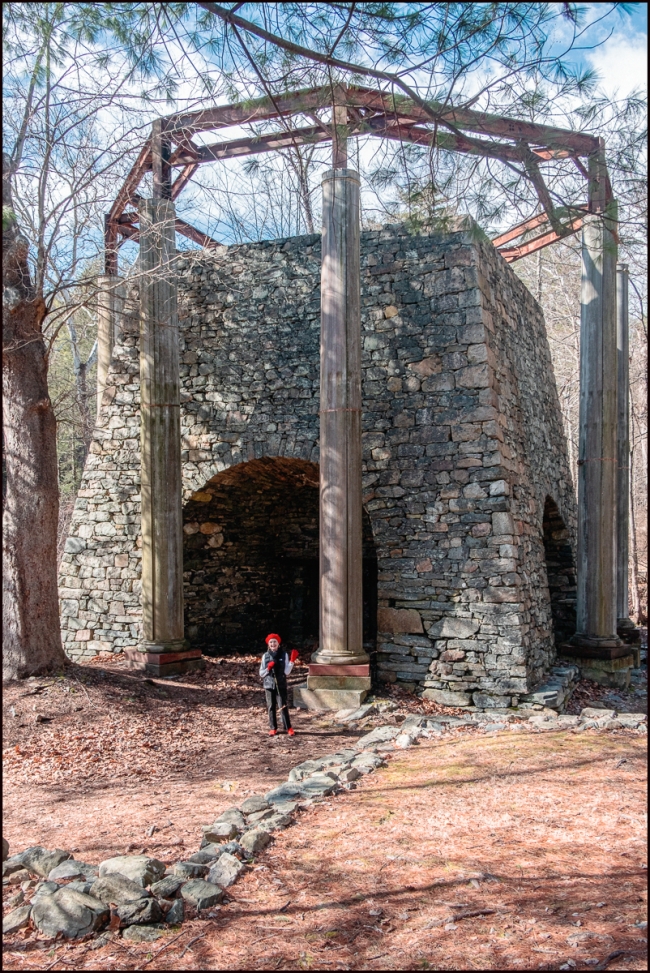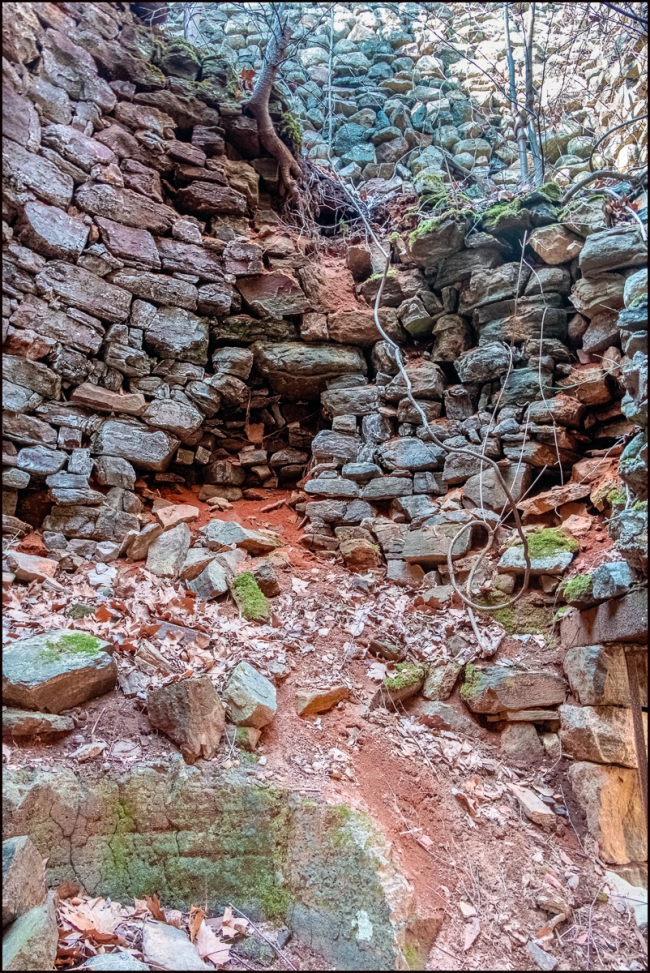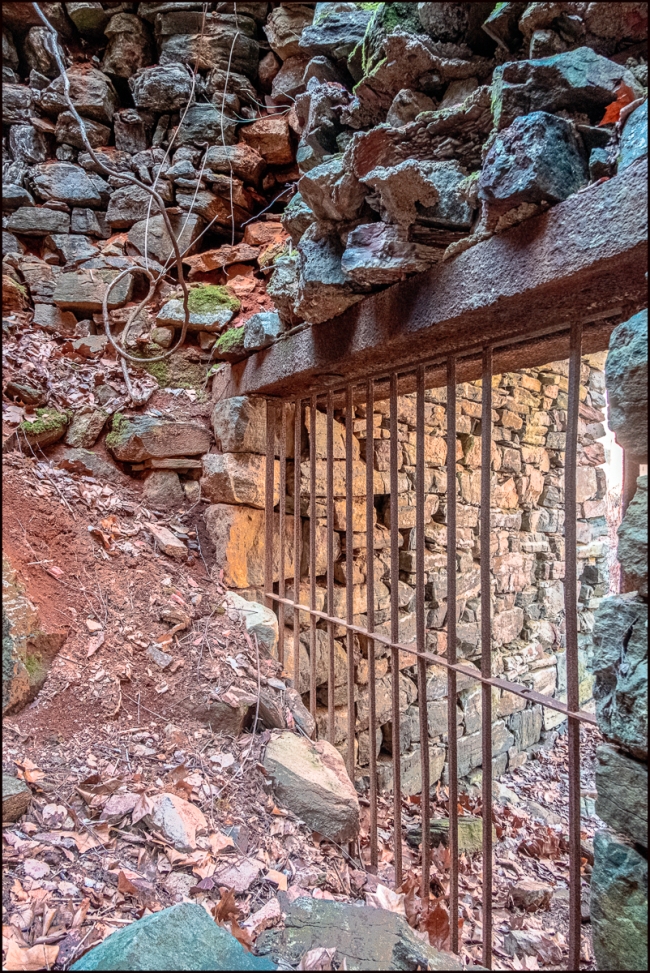“Sterling Furnace No.2, restored to its pyramidal shape, played a major role in the production of iron for the “great chain”, cannonballs, and other weapons used in the Revolutionary War. The iron used for domestic household and farm implements and tools was also produced here. The raw concentrated iron ore was smelted with charcoal and limestone in the furnace and then the molten iron flowed into forms in the ground to be converted to “pigs” (ingots). Water power from the outfall from Sterling Lake was used to run the machinery that powered huge bellows and forced air into the furnace to raise the temperature of the mix to the iron melt point.
After its restoration in 1960 by architect Roland Robbins, a domed structure – supported by wooded neo-classical columns – was erected around the Furnace to protect it. The dome is gone but the columns remain.” (Lakeville Ironworks Trail Brochure).
I’ve seen pictures of this furnace many times before and in my mind I saw it as being rather small. Maybe you have to duck your head as you go under the arched opening? Boy was I wrong. Take a look at the picture below with my friend, Karen posing before the furnace and you get a better idea of just how big it is.
This and the next picture show the interior of the furnace.
Diagram showing the workings of the furnace.
Taken with a Fuji X-E3 and Fuji XC 16-50mm f3.5-5.6 OSS II





